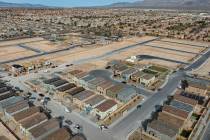Spreading Green
A gorgeous local-quarried granite countertop. Bamboo floors that didn’t destroy a tropical forest. A xeriscape of drought-tolerant plants that don’t guzzle water. All are green-home features that don't just offer visual appeal but should be among the tipping points for sellers to sway potential buyers to their home versus another.
But it can be a tougher sale to convince them about the advantages concealed green materials and systems. The perception of green prices being higher is another deterrent, particularly because of the recession – a double-whammy of a housing slump and consumer belt tightening, says Bill Worthen, resource architect for sustainability for the American Institute of Architects.
Yet, despite the challenge, green advocates are finding it a bit easier to make their argument about green’s pros, says Worthen. One sign can be found in a recent AIA Home Design Trends Survey, which showed an increase in interest in energy management, geothermal heating/cooling and water reclamation. Among them is Steve and Lynnisse Patrick of Murfreesboro, Tenn., who currently are renovating their home with sustainable and energy-saving features. Among them: low-e windows; recycled lumber and doors; and Nichiha siding, a fiber-cement product made from recycled post-consumer waste.
Mark Williams, president of RSU Contractors, which is overseeing the Patrick's renovation, says the right selection for upgrades often depends on whether consumers are building new or remodeling.their current home. Some green improvements may make more financial sense than others; for example, a tankless water heater may be difficult to retrofit into a home with old plumbing lines, Williams says,
Walid Wahab, owner of Wahab Construction in Miami, “People care a lot about green until they learn the up-front costs of construction or demolition.” Or, some buyers will pay for sometimes increased costs, but only up to a certain price, says Stephen Melman, director of economic services for the National Association of Home Builders.
Cost Analysis
According to the NAHB, 61 percent of homeowners said they would spend more than $5,000 up front to save on utility costs. With that, 86 percent of home remodelers install Energy Star-rated appliances to reduce future energy costs.
But all green upgrades don’t require a huge initial investment, as there are many affordable options, what Horowitz terms “low hanging fruit,” such as insulating outlets and switch plates on outside walls to stop heat loss.
Tax credits are available certain energy-efficient upgrades, both for existing homes and new construction. The Wind, Solar, Geothermal and Fuel Cell Tax Credit, available through 2016, pays back 30 percent of the cost (with no cap) of geothermal heat pumps, solar panels, solar water heaters, small wind energy systems and fuel cells
A credit for Qualified Energy Efficiency Improvements also provides a 10-percent credit for the purchase of qualified energy efficiency improvements to existing homes, “placed in service” between Jan. 1, 2011 and Dec. 31, 2011.
Worthen’s top choices for easy green upgrades are insulation, sealed windows and doors, low- or no VOC paints, and ventilation and LED and fluorescent lighting with controls.
Informed Decisions
When shopping for new green home products or appliances, Worthen suggests asking potential vendors these questions:
• What’s the most environmentally friendly product?
• What makes it environmentally safe?























